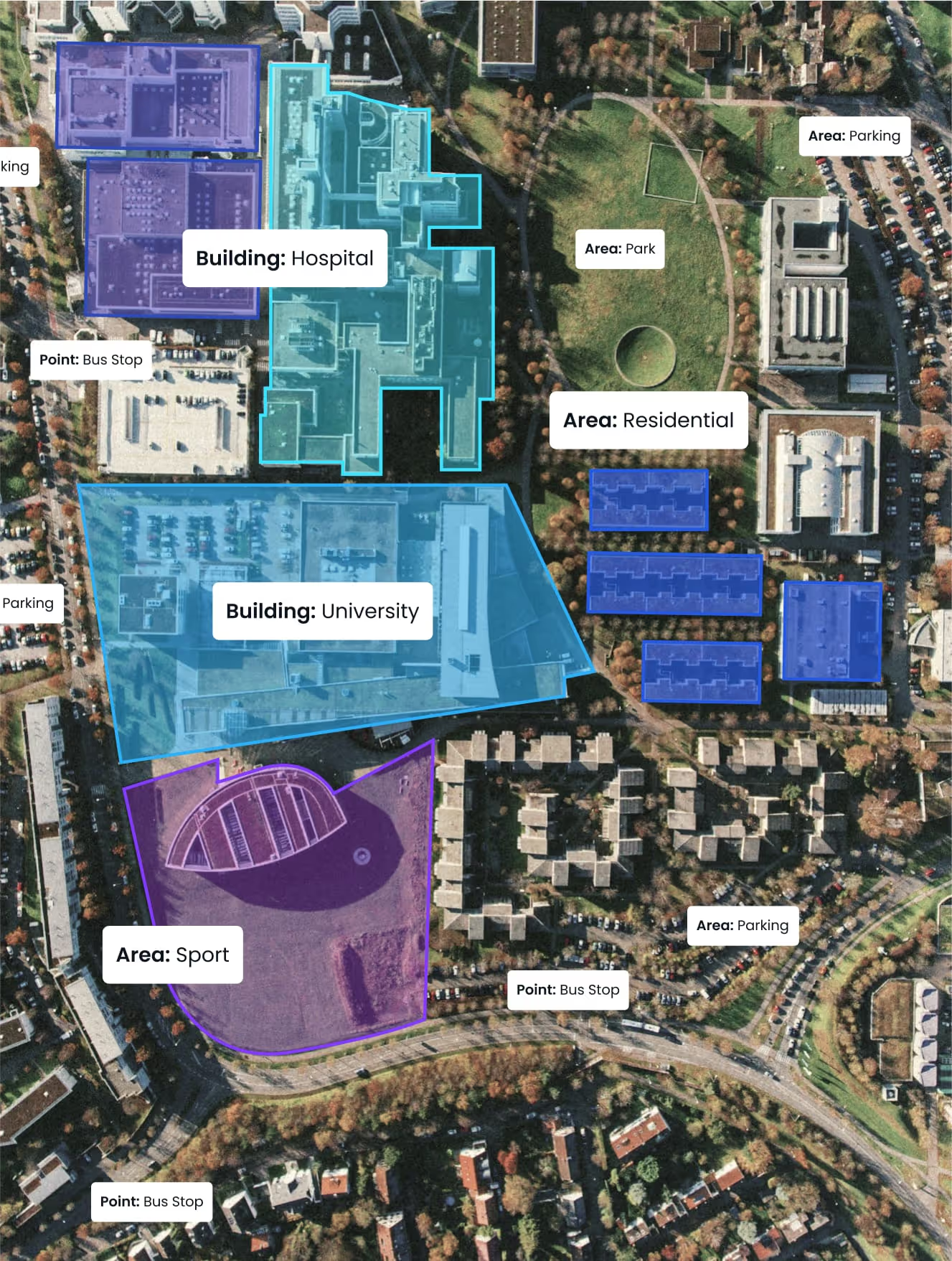The Rising Need for AI in Insurance Fraud Detection
Fraud costs the insurance industry an estimated $80 billion annually in the U.S. alone, according to the Coalition Against Insurance Fraud. As claims grow in volume and complexity, manual fraud detection becomes both inefficient and error-prone. That’s where AI steps in.
But AI doesn’t just "know" what fraud looks like. It needs data—specifically, labeled visual data—to learn how to spot inconsistencies, exaggerations, or outright fabrications in claim submissions. Image Annotation is the backbone of this learning process.
Why Images Matter in Detecting Insurance Fraud
Images are more than just claim attachments—they’re the forensic fingerprints of insurance cases. In a digital-first world, where the majority of insurance claims are filed through apps or online platforms, images now serve as primary evidence for damage, injuries, and losses. But without intelligent interpretation, even the most detailed photo can be misleading.
So, why do images hold such weight in fraud detection?
They Reveal What Words Can’t
Textual claim descriptions are subject to interpretation, exaggeration, or omission. Photos offer a more objective view—if analyzed correctly.
For example:
- A claimant might describe a “totaled vehicle,” but annotated images can reveal only minor damage.
- An injury claim might mention a “fractured arm,” yet image metadata shows the photo was taken months before the incident.
When AI is trained to spot visual inconsistencies, duplicated damage, or photo tampering, it provides a layer of verification that goes far beyond what's written in the claim.
Visual Patterns Are Hard to Fake Consistently
Fraudsters can lie with text—but faking the visual patterns of damage (like the way metal bends, or how glass cracks) is far more complex. AI models trained on thousands of annotated examples can pick up on:
- Inconsistent shadowing or lighting in tampered images
- Reused images submitted in multiple unrelated claims
- Patterns that don’t align with known causes (e.g., “hail damage” on only one side of a roof)
These telltale signs are subtle but detectable—with properly labeled training data.
Metadata Tells a Hidden Story
AI doesn’t just see what’s in an image—it sees how and when the image was taken. Labeled datasets can teach models to analyze:
- EXIF metadata: timestamps, geolocation, camera model
- Compression artifacts: signs of image editing or manipulation
- Anomalies in image resolution or format that might indicate Photoshop or AI generation
Together, these layers of visual and contextual clues help fraud detection AI determine whether an image is trustworthy—or suspicious.
It Powers Scalable, Fair Decision-Making
Using annotated images allows insurance companies to make consistent, unbiased decisions at scale. Instead of relying on individual adjusters’ judgment, AI systems ensure every claim undergoes the same scrutiny—leveling the playing field for honest claimants and helping insurers reduce losses.
🏠 Use Cases by Insurance Type
Property Insurance: Fake or Inflated Damage
Image annotation enables AI to spot subtle anomalies in submitted photos:
- Reused images from other incidents
- Signs of Photoshop manipulation (blur edges, mismatched lighting)
- Damage patterns inconsistent with described events (e.g., “storm” damage without accompanying debris)
Real-world AI systems trained on annotated property damage photos can flag high-risk cases for human review, speeding up processing and reducing payouts on fraudulent claims.
Auto Insurance: Staged Collisions and Reused Photos
AI trained on annotated crash scene images can:
- Detect repeated backgrounds or patterns (signs of reused images)
- Identify inconsistencies in damage severity vs. reported collision force
- Match submitted images with existing databases of known fraud attempts
According to a McKinsey report, insurers using AI for auto claims saw a 30% reduction in fraud-related payouts and faster claim resolutions.
Health Insurance: Fake Injury Documentation
When medical scans or injury images are annotated with context—such as injury type, visible symptoms, or metadata—AI can detect:
- Duplicate or reused scan files
- Mismatched injury severity
- Signs of manipulation in image histograms
This is especially valuable in high-volume segments like worker's compensation or minor trauma claims.
Travel & Event Claims: Fake Photos or Staged Losses
In claims related to lost luggage, trip cancellations, or staged incidents (like stolen items abroad), AI can cross-validate submitted images with:
- Image metadata (date, location, device)
- Annotated datasets of past legitimate claims
- Known public photos used by fraudsters
🔍 How Image Annotation Builds Fraud-Fighting AI
Let’s break down how annotated data actually helps AI models detect fraud:
- Visual labeling (e.g., bounding boxes around damage or points of interest) trains computer vision models to recognize specific claim-relevant elements.
- Classification tags (e.g., “front-end impact,” “glass shatter,” “burn marks”) provide semantic context to the visual content.
- Contextual metadata like timestamp, GPS coordinates, and file origin helps models cross-check authenticity.
This structured representation allows models like convolutional neural networks (CNNs) or transformer-based vision models (like ViTs) to build pattern recognition over thousands of claims. With enough training, the model learns to detect irregularities—such as forged damage, staging inconsistencies, or duplicated claim submissions.
🧩 The Role of Consistency and Context in Annotation
AI models can only be as accurate as the data they’re trained on. Consistent annotation practices are vital:
- Labeling all relevant features (not just primary damage) helps the model detect subtle manipulations.
- Using hierarchical tags (e.g., [damage → dent → side-panel]) ensures deeper understanding.
- Context-aware annotations allow AI to consider how the image fits into the larger claim narrative (e.g., damage not matching accident description).
Annotation teams often collaborate with domain experts—insurance adjusters, forensic specialists, and fraud investigators—to ensure labels reflect real-world fraud scenarios.
🚨 Real-World AI Systems Fighting Fraud
The adoption of image-powered fraud detection is no longer theoretical—it’s actively shaping the operations of modern insurance companies. Here's a deeper look at how major players and startups are using annotated visual data to tackle fraud head-on.
🧠 Tractable: Visual AI for Auto Claims
Tractable has developed AI systems that analyze car accident photos to assess damage severity and identify fraud risks. Their models are trained on millions of expertly annotated images of vehicles, capturing details like:
- Impact zones
- Damage types (dents, cracks, paint scrapes)
- Common fraud signatures (e.g., repeated photo use, mirrored damage)
Fraud detection in action: Tractable’s AI can compare new claim images against a historical database of prior claims and flag potential duplicates or inconsistencies in damage. This has led to measurable fraud reduction and faster claim processing times for global insurers like Tokio Marine and Covéa.
🛡️ Shift Technology: Cross-Channel Fraud Scoring
Shift Technology offers a comprehensive fraud detection engine that combines annotated image data with structured claim info, phone transcripts, and behavior analytics. Their platform:
- Integrates visual anomaly detection using labeled datasets
- Flags image inconsistencies across thousands of claims
- Supports multi-modal analysis to increase fraud detection precision
In practice: Shift’s platform has helped clients reduce fraudulent payouts by up to 75%, especially in property and health insurance lines where visual evidence plays a central role.
🧾 FRISS: Full-Spectrum AI for Claim Risk Scoring
FRISS incorporates annotated images into a broader fraud risk scoring system that includes policy data, network analysis, and public records. Their AI:
- Uses visual data to assess suspicious damage or unusual photographic behavior
- Cross-validates submitted photos with past claims and third-party databases
- Flags manipulated or non-original images through deep learning algorithms trained on annotated examples
Customer impact: FRISS claims to detect over 50% of fraud attempts pre-payout, saving insurers millions while maintaining customer trust through fair, explainable AI decisions.
🔍 Insurtech Startups & Innovation Labs
Beyond the major players, innovation hubs within insurers like Allianz, AXA, and Zurich are investing heavily in internal AI systems that rely on annotated images. Key experiments include:
- Real-time image validation during mobile claims submission (rejecting obviously altered or stock images)
- AI-augmented adjuster tools where fraud probability is displayed directly on image evidence
- Peer-group analysis of annotated claims to detect statistical outliers (e.g., unusually frequent similar damages)
These initiatives all stem from one insight: AI is only as smart as the data it learns from—and annotation makes that data usable.
🚧 Challenges in Using Image Annotation for Fraud Detection
Despite the promising results, several challenges need to be tackled to make annotation workflows efficient and fraud detection models trustworthy.
Data Quality and Bias
Poorly annotated images—or annotations influenced by bias—can cause models to learn the wrong cues. For example:
- Overrepresentation of certain car models or geographies
- Annotators misunderstanding damage types
- Inconsistent labeling across datasets
Combating this requires diverse training sets, consistent QA, and explainable AI practices.
Privacy and Compliance
Images submitted during claims often contain sensitive personal information. Annotation teams must comply with regulations like:
- GDPR in Europe
- HIPAA for health data in the U.S.
- Insurance-specific internal policies
Privacy-aware annotation pipelines must anonymize faces, redact identifiable text, and use secure infrastructure.
Fraudsters Also Get Smarter
As AI improves, so do the techniques fraudsters use to evade detection. Some have even begun using AI tools to alter images more subtly—requiring ongoing dataset updates and annotation of newer fraud techniques.
🌍 Building Ethical and Transparent AI in Insurance
Insurers must ensure that AI doesn’t unfairly penalize legitimate claims or reinforce existing biases. This requires:
- Explainable AI models that can justify decisions (e.g., why a claim was flagged)
- Human-in-the-loop systems where high-risk claims are reviewed manually
- Inclusive datasets that represent real-world diversity in vehicles, property types, medical imagery, and more
Stakeholders—including AI teams, annotation vendors, and compliance officers—must collaborate to create robust data governance around annotated datasets.
📈 Future Trends: Where Annotation Meets AI Evolution
The next wave of AI in insurance fraud detection is fast approaching—and annotated images will remain at the center of it all.
Synthetic Data for Rare Fraud Patterns
To simulate rare fraud types that don’t exist in volume, insurers are turning to synthetic data—images generated with GANs or 3D rendering tools that are annotated at source. This supplements real data and improves generalization.
Multimodal AI Models
Future systems will integrate visual annotations with:
- Textual claim descriptions
- Voice transcripts from adjuster calls
- Sensor data from cars or homes
This multimodal learning will require harmonized annotations across data types, expanding the role of image annotation into new territories.
Real-Time Mobile AI Validation
Expect more insurers to deploy on-device AI that validates submitted photos in real-time during claim filing. This could detect tampering before the claim even reaches human reviewers—reducing turnaround and saving costs.
🛠️ Tips for Creating High-Impact Image Annotation Workflows
To ensure your fraud detection model reaches high accuracy and explainability, focus on:
- Collaborating with fraud experts to define edge cases and red flags
- Standardizing your annotation guidelines across datasets
- Implementing annotation QA loops to catch label errors early
- Building visual taxonomies that reflect real-world claim complexity
- Regular dataset refresh cycles to keep up with new fraud tactics
🗣 Let’s Talk About Your Fraud Detection AI
AI won't eliminate fraud on its own—but with well-annotated data, it becomes a powerful tool in your fight against it. Whether you're an insurer looking to upgrade fraud detection or an AI vendor building for the insurance sector, it all starts with the data.
🚀 Need help creating high-quality annotated datasets for fraud detection?
Reach out to DataVLab and let’s build the foundation for trustworthy insurance AI—together.
📌 Related: AI in Claims: Annotating Damage Photos for Faster Insurance Payouts
⬅️ Previous read: Annotating Vehicle Accident Images for Automated Insurance Claims





